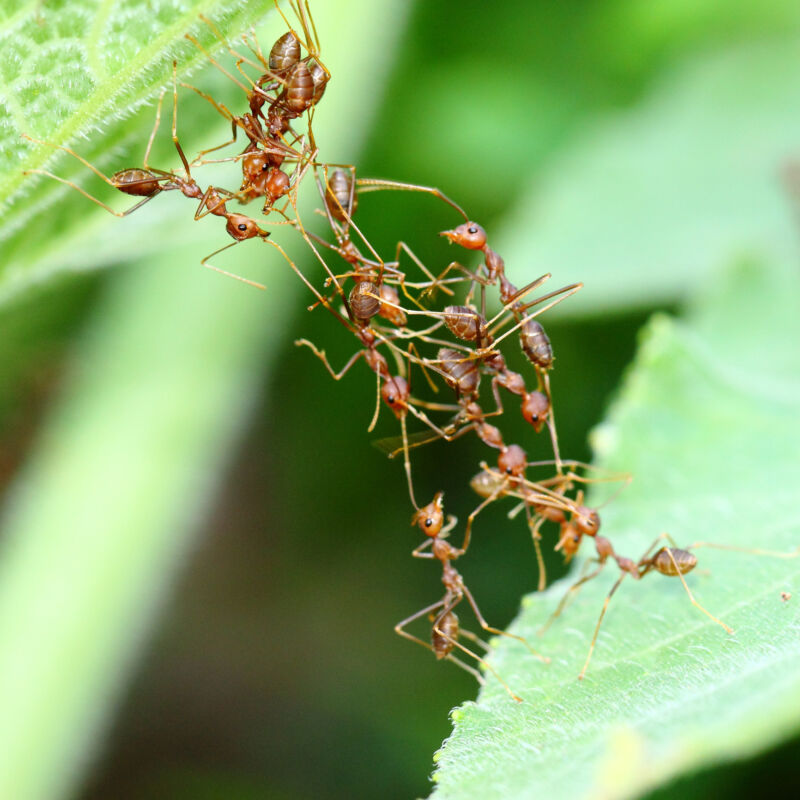A calculated risk: How ants judge when to commit their bodies to a ladder

Enlarge (credit: grass-lifeisgood)
Social insects, which don't have very large nervous systems, are capable of remarkably sophisticated behavior, such as the direction-giving dance by bees or the lifesaving rafts formed by fire ants. In these cases, the benefits of this behavior-more food or survival, respectively-are pretty obvious. But there are also cases where the benefits are less than obvious, so how do insects collectively decide to engage in a risky activity?
Researchers are studying a species of ant, the weaver ant Oecophylla smaragdina, that can move vertically amid trees by building a ladder using its own body. The effort takes a lot of workers away from foraging for as long as the ladder is in place, making it a major investment. But in most cases, the rewards will be uncertain; there's only a payoff if the ants find a significant food source at the newly accessed level.
To make the decision, ants appear to judge the distance between their location and the destination. But not every ant makes the same judgment, and it's possible to trick the ants into building longer ladders by moving the destination.